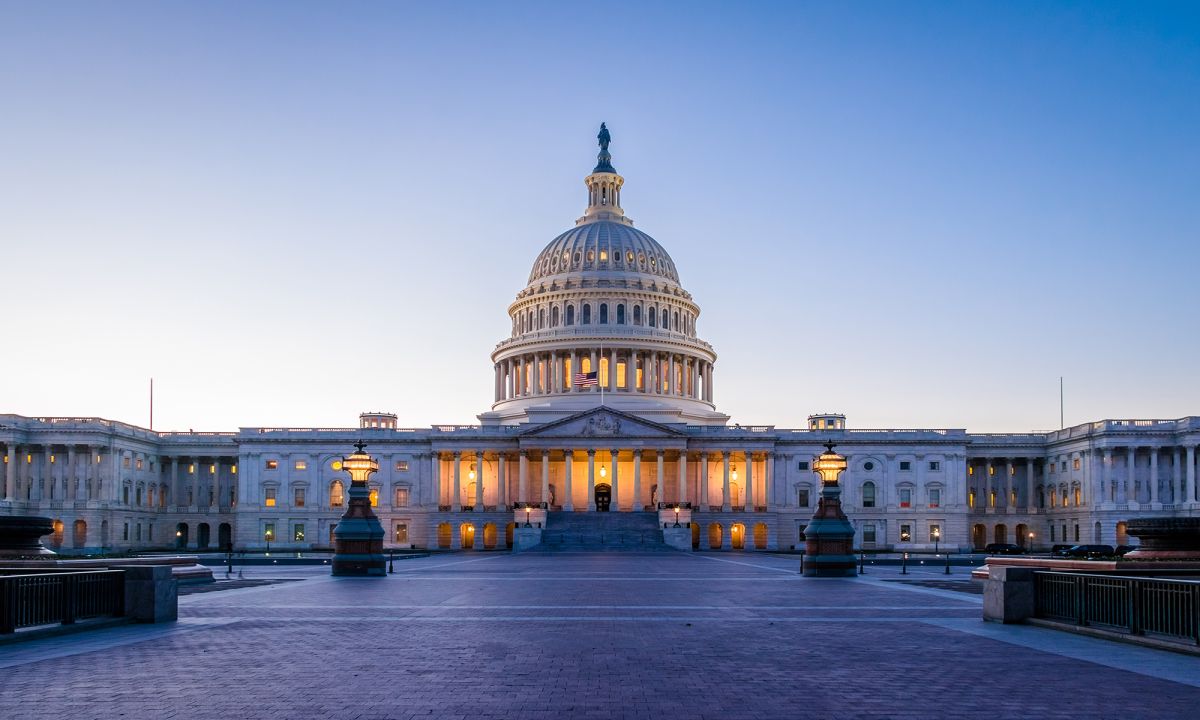eNews, Government
New Speaker, Same Old Problems

It feels a bit like déjà vu, as we are just over a week away from another potential government shutdown on Nov. 17 with no real solution in sight. Despite this, the political tea leaves in DC are pointing towards a relatively painless resolution, at least for a few months. To understand why, here’s a recap of the historic search for a new Speaker of the House last October.
Russian Speaker Roulette
Last month, a small minority of Republicans triggered the nuclear option, ousting former Speaker Kevin McCarthy for ignoring conservative demands and negotiating with Democrats to avert a government shutdown. What followed was a three-week process to find another candidate who could secure the support of both hardline conservatives as well as moderate Republicans.
First up was Steve Scalise. McCarthy’s #2 and overwhelmingly popular within the party, this was the natural choice. Unfortunately, he was not different enough for the small group of hardline conservatives, and so while he easily won the nomination against Freedom Caucus-founder Jim Jordan, he ultimately opted to bow out gracefully rather than be defeated in a vote on the House floor.
The next obvious candidate was Jim Jordan, one of the original founders of the Freedom Caucus and current Chair of the House Judiciary Committee. Considered a borderline conservative hero, he however had a large group of “never-Jordans” among moderate Republicans who had been vilified by the Freedom Caucus in the past and did not feel Jordan was qualified to lead the party. Jordan spent several days and more than a handful of roll call votes to give it the good ol’ college try, but eventually stepped aside as it became clear he was losing more votes than he was gaining with each successive attempt.
The search continued and eventually Tom Emmer, the third highest member of House Republican leadership put his name forward. Like Scalise, he easily won the closed-door nomination among Republicans, but eventually withdrew from consideration prior to a floor vote because he could not convince hardliners to support him.
Then came Mike Johnson, the #4 in House Republican leadership that many considered to be the ‘token’ conservative member of McCarthy’s leadership team. Whether it was fatigue within the party or simply divine providence, after winning the closed-door ballot within the party he sailed to victory on the House floor with all 220 Republicans voting in favor of electing him the next Speaker of the House. As a four-term Member of Congress, he is the most junior Speaker of the House in more than 100 years.
A colleague of mine put it best: whoever had Mike Johnson as Speaker of the House this year on their bingo card is either a genius or needs to play the lottery.
So What Has Changed?
Speaker Johnson’s first act in his new role was to cancel the October/November recess and keep the House working on passing all 12 appropriation bills, or government spending bills. Rather than shielding moderate Members from taking difficult votes, he has taken a much more hands off approach, opting to let the chips fall as they may. And so far, it’s working.
Since he was elected Speaker on Oct. 25, the House has passed three appropriations bills, bringing the total up to seven out of 12. While it is unlikely that they will be able to finish all 12 before the Nov. 17 deadline, it is significantly more progress over a short period of time than McCarthy was able to achieve. It may seem like a low bar to pass three bills in two weeks, but each bill has hundreds of amendments and potentially dozens of votes that Members need to speak to and vote on.
Johnson has also already telegraphed to his party: he is not in the business of shutting down the government. So, while negotiations between Republicans and Democrats continue over the overall funding levels, he has acknowledged that another continuing resolution may be necessary and that he thinks it should go through mid-January to avoid an end-of-year crunch.
What to Expect Next Week
There is already unrest within the Republican party over the idea of another ‘clean’ extension, but most of Washington is predicting that because Johnson is still in his ‘honeymoon phase’ as the new Speaker and the fact that he went into it telling his party that they would need to do another continuing resolution, that it will eventually get done. As such, while there will be some posturing, we don’t expect a government shutdown next week.
But where do we go from here? It’s very clear that the American public is opposed to a government shutdown, and that right now, a shutdown would likely be blamed on Republicans. If conservatives want to change the narrative, they’re going to need to start now, and until they do, it’s hard to see Johnson being able to fulfill his promises to his party when January rolls around next.
Webinar Next Week
If you’ve enjoyed this series, or want to dive more deeply into both the current political situation in DC and what it means for bankruptcy, trade, or other economic issues, NACM’s lobbyist Ash Arnett will lead a complimentary webinar at 11am ET on Wednesday, Nov. 15, for NACM members. Register now for Making Sense of Washington, D.C. – Politics and Policy for NACM Members.





